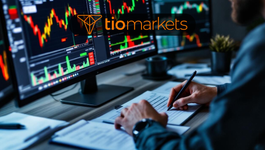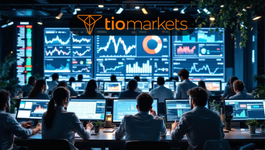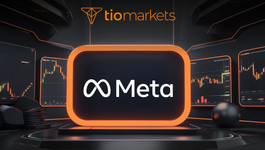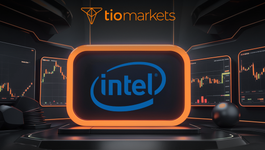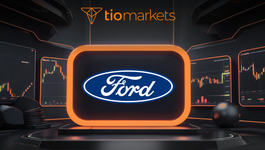Automated Trading: Getting Started Guide | TIOmarkets
BY TIOmarkets
|June 6, 2024Embarking on the journey of automated trading can seem like navigating through a labyrinth for newcomers. This guide aims to demystify the process, offering a clear path towards understanding and leveraging automated trading systems within the Forex market. With the right tools and knowledge, traders can unlock a new dimension of trading that is both efficient and potentially more profitable.
Understanding Automated Trading
At its core, automated trading involves the use of computer programs to execute trades on behalf of the trader, based on predefined criteria. These systems, also known as trading robots or Expert Advisors (EAs), can analyze market data, make trading decisions, and even execute trades without human intervention.
This approach to trading offers several advantages, including the elimination of emotional decision-making and the ability to backtest strategies on historical data. However, it also requires a solid understanding of both the market and the specific trading platform being used.
Benefits of Automated Trading
Automated trading systems can operate 24/7, capitalizing on opportunities even when the trader is not actively monitoring the markets. This round-the-clock operation can lead to greater market coverage and potentially more trading opportunities.
Another significant advantage is the reduction of emotional trading. Automated systems adhere strictly to the set parameters, eliminating the risk of impulsive decisions based on fear or greed.
Choosing the Right Automated Trading Software
With a plethora of automated trading software available, selecting the right one can be overwhelming. It's crucial to consider factors such as compatibility with your trading platform, ease of use, and the ability to customize the software to fit your trading strategy.
Many traders opt for platforms that offer a user-friendly interface and comprehensive support, ensuring that they can effectively implement and manage their automated trading systems.
Setting Up Your Automated Trading System
Setting up an automated trading system involves several key steps, starting with defining your trading strategy. This strategy will dictate the rules your automated system follows, so it's essential to base it on thorough market analysis and proven trading principles.
Defining Your Trading Strategy
Your trading strategy should clearly outline the conditions under which trades will be executed, including entry and exit points, as well as money management rules. It's advisable to backtest your strategy on historical data to ensure its viability before going live.
Programming Your Automated Trading System
Once your strategy is defined, the next step is to program your trading system. This can be done personally if you have the necessary coding skills, or by hiring a professional programmer. The key is to ensure that the program accurately reflects your trading strategy and operates reliably.
Testing and Optimization
Before deploying your automated trading system in a live market, it's crucial to test it extensively. This testing phase should include both backtesting against historical data and forward testing in a simulated environment. Through testing, you can identify and rectify any issues, optimizing your system for better performance.
Risks and Considerations
While automated trading offers numerous benefits, it's not without its risks. One of the primary concerns is the potential for technical failures, such as connectivity issues or programming errors, which can lead to unexpected losses.
Managing Technical Risks
To mitigate technical risks, ensure that your trading system is thoroughly tested and that you have a reliable internet connection. Additionally, consider using a Virtual Private Server (VPS) to run your trading system, which can provide more stable and faster connectivity.
Understanding Market Risks
Automated trading systems are designed based on historical market data and trends. However, the market is dynamic and can change in ways that the system may not anticipate. It's important to continuously monitor market conditions and adjust your system as necessary to align with current market dynamics.
Implementing Risk Management Strategies
Effective risk management is crucial when engaging in automated trading. Implementing strategies such as setting stop-loss orders, diversifying your portfolio, and avoiding over-leveraging can help protect your capital and minimize potential losses. It's essential to have a clear risk management plan in place to safeguard your investments.
Utilizing Stop-Loss Orders
Stop-loss orders are automated instructions that trigger a trade to close at a predetermined price level. By setting stop-loss orders, traders can limit their losses and protect their capital in case the market moves against their positions. It's important to place stop-loss orders at strategic levels based on your risk tolerance and trading strategy.
Diversifying Your Portfolio
Diversification is a key risk management strategy that involves spreading your investments across different assets or markets. By diversifying your portfolio, you can reduce the impact of adverse movements in any single asset or market sector. This can help mitigate risk and potentially improve overall returns.
Monitoring and Adjusting Your Automated System
Continuous monitoring of your automated trading system is essential to ensure its effectiveness and adaptability to changing market conditions. Regularly review performance metrics, analyze trading results, and make necessary adjustments to optimize the system's performance. By staying proactive and responsive, you can enhance the profitability and longevity of your automated trading system.
Reviewing Performance Metrics
Monitoring key performance metrics, such as win rate, average profit/loss per trade, and maximum drawdown, can provide valuable insights into the effectiveness of your automated trading system. By analyzing these metrics regularly, you can identify strengths and weaknesses, allowing you to make informed decisions for system improvement.
Adapting to Market Changes
The financial markets are constantly evolving, influenced by various economic, geopolitical, and technological factors. To maintain a competitive edge, it's essential to adapt your automated trading system to changing market conditions. Stay informed about market trends, news events, and emerging technologies that could impact your trading strategy, and make necessary adjustments to optimize performance.
Conclusion
Automated trading can be a powerful tool for traders, offering the potential for more efficient and disciplined trading. However, success in automated trading requires careful planning, thorough testing, and ongoing monitoring. By understanding the basics of automated trading, choosing the right software, and being aware of the associated risks, traders can better position themselves to leverage the benefits of automated trading systems.
Remember, while automated trading can offer significant advantages, it's not a guaranteed path to profits and comes with its own set of challenges. Approach automated trading with caution, and consider it as part of a broader, diversified trading strategy.
Start Your Automated Trading Journey with TIOmarkets
Ready to take the first step towards efficient and disciplined trading? Join the 170,000+ traders from over 170 countries who have already begun their journey with TIOmarkets. As a top-rated forex broker, we offer a robust online trading platform where you can trade over 300 instruments across Forex, indices, stocks, commodities, and futures markets, all with low fees. Enhance your trading skills with our comprehensive suite of educational resources and step-by-step guides. Don't wait any longer to elevate your trading experience. Create a Trading Account today and unlock the full potential of automated trading.

Risk disclaimer: CFDs are complex instruments and come with a high risk of losing money rapidly due to leverage. You should consider whether you understand how CFDs work and whether you can afford to take the high risk of losing your money. Never deposit more than you are prepared to lose. Professional client’s losses can exceed their deposit. Please see our risk warning policy and seek independent professional advice if you do not fully understand. This information is not directed or intended for distribution to or use by residents of certain countries/jurisdictions including, but not limited to, USA & OFAC. The Company holds the right to alter the aforementioned list of countries at its own discretion.
Join us on social media

Behind every blog post lies the combined experience of the people working at TIOmarkets. We are a team of dedicated industry professionals and financial markets enthusiasts committed to providing you with trading education and financial markets commentary. Our goal is to help empower you with the knowledge you need to trade in the markets effectively.
Related Posts
